Abstract
Soluble oligovalent antigen--antibody complexes were prepared and analysed by ultracentrifugation in order to study the effect of the combining ratio, antigen valence and concentration upon the size and molecular composition of the composition of the complexes. Fluorescein (F) conjugates of rabbit serum albumin (RSA) and thyroglobulin (RTg) were combined with high affinity rabbit anti-F antibodies to form soluble complexes. The effect of the combining ratio paralleled findings in precipitating systems in that the largest soluble complexes were found at equimolarity and mild molar antibody excess. Tetravalent antigen formed precipitates at combining ratios near equimolarity, whereas trivalent antigens failed to precipitate at similar concentrations. Complexes prepared near equimolarity were most sensitive to changes in concentration, higher concentrations leading to larger complexes. The Ab/Ag ratios of different-size complexes in the same preparation were remarkably similar. This ratio was dependent on the antibody--antigen combining ratio, was limited by antigen valence and was not affected by concentration differences. The data support the hypothesis that soluble complexes are formed in two steps. First, antigen and antibody combine to form subunits whose Ab/Ag ratio is determined by the combining ratio and antigen valence. These subunits then combine to form larger complexes in a manner analogous to polymerization.
Full text
PDF

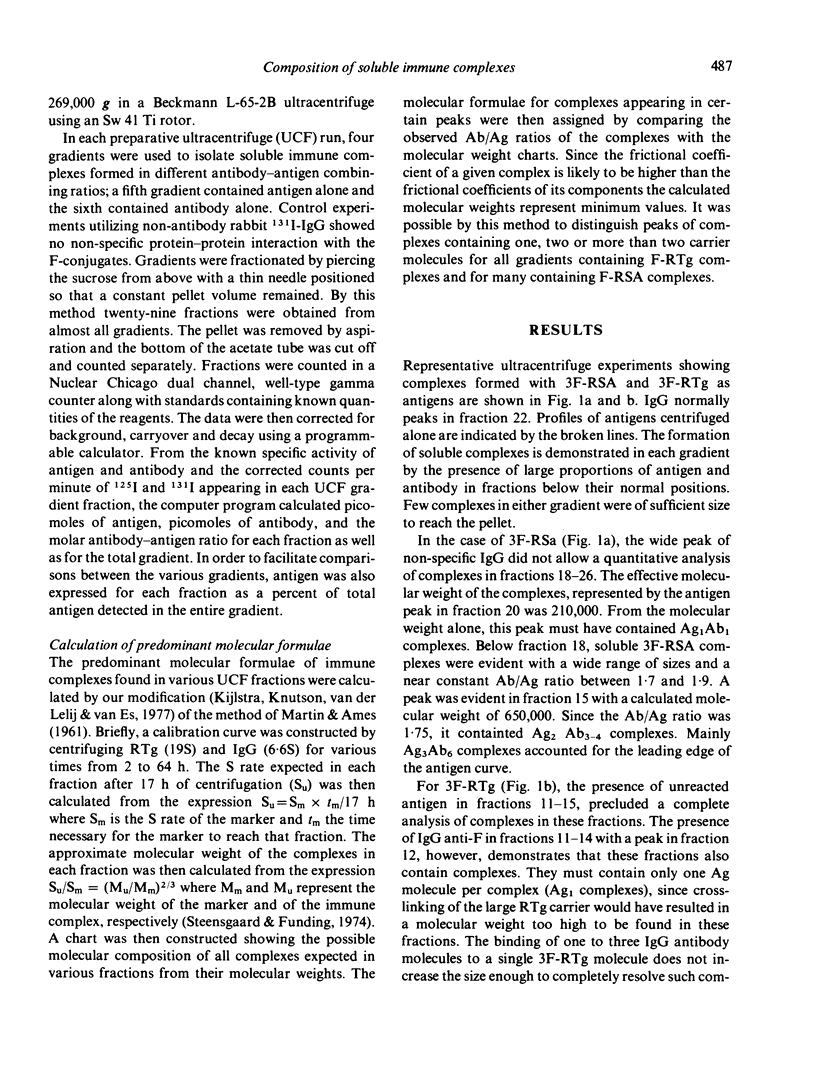
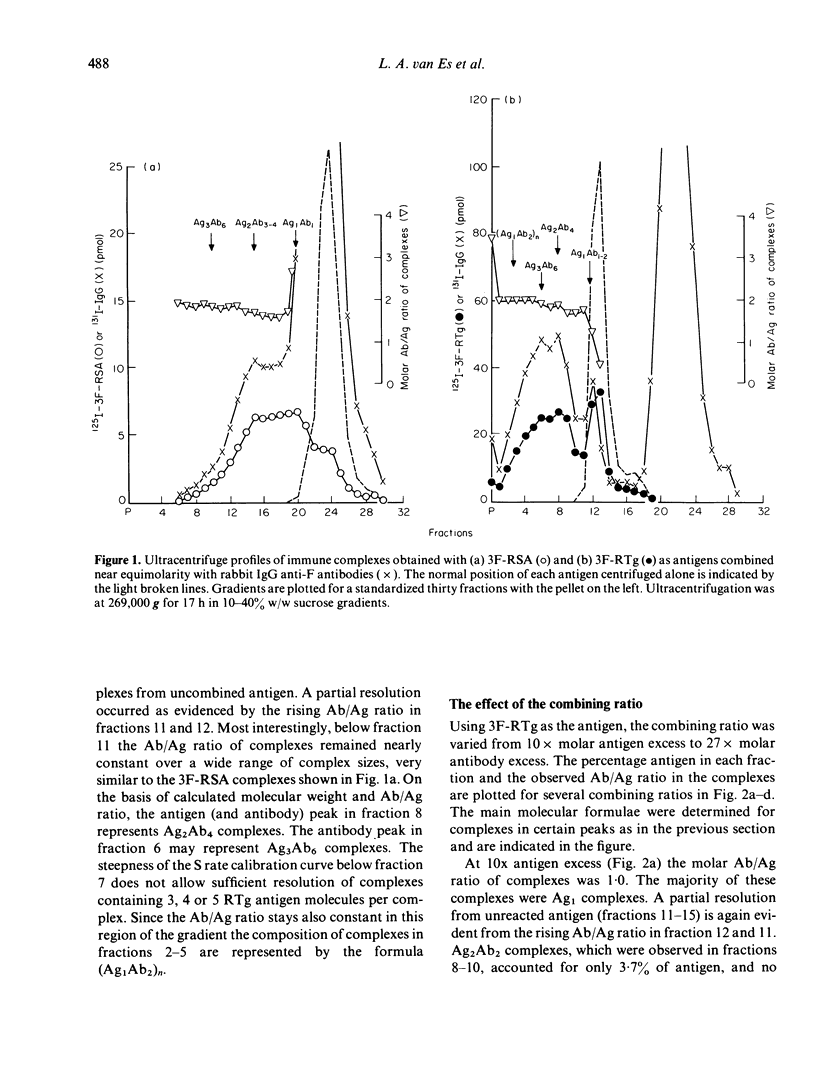
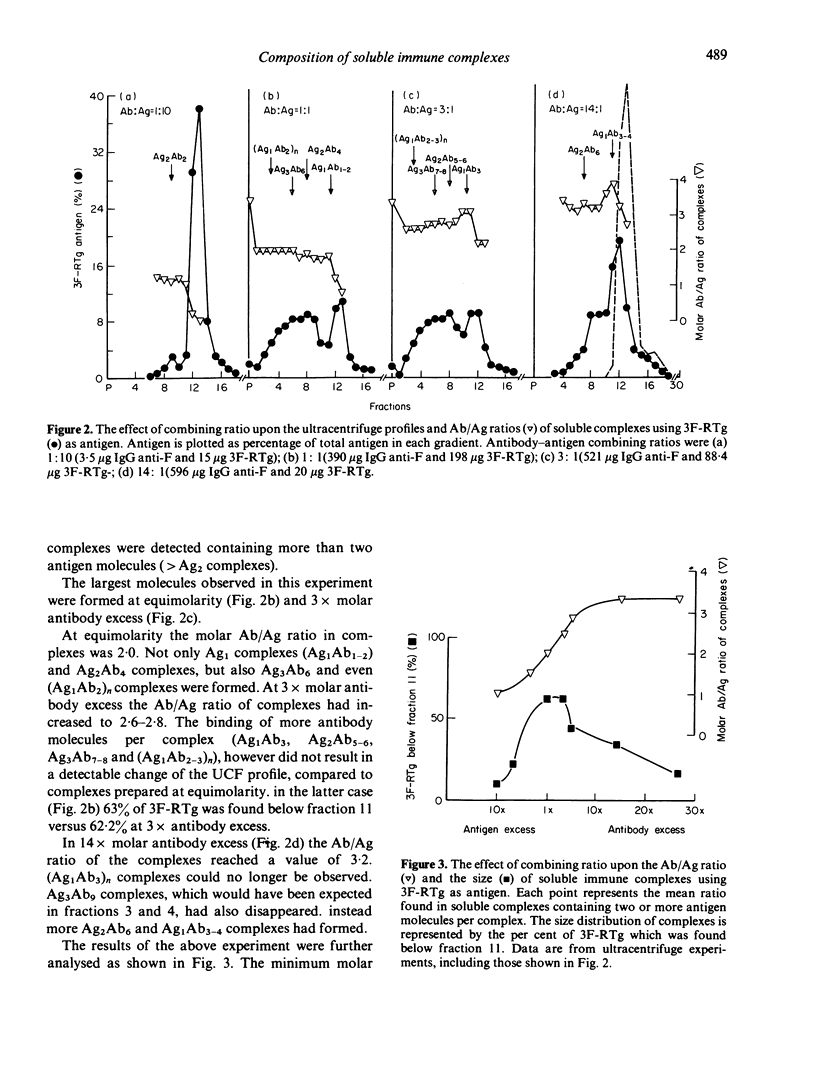
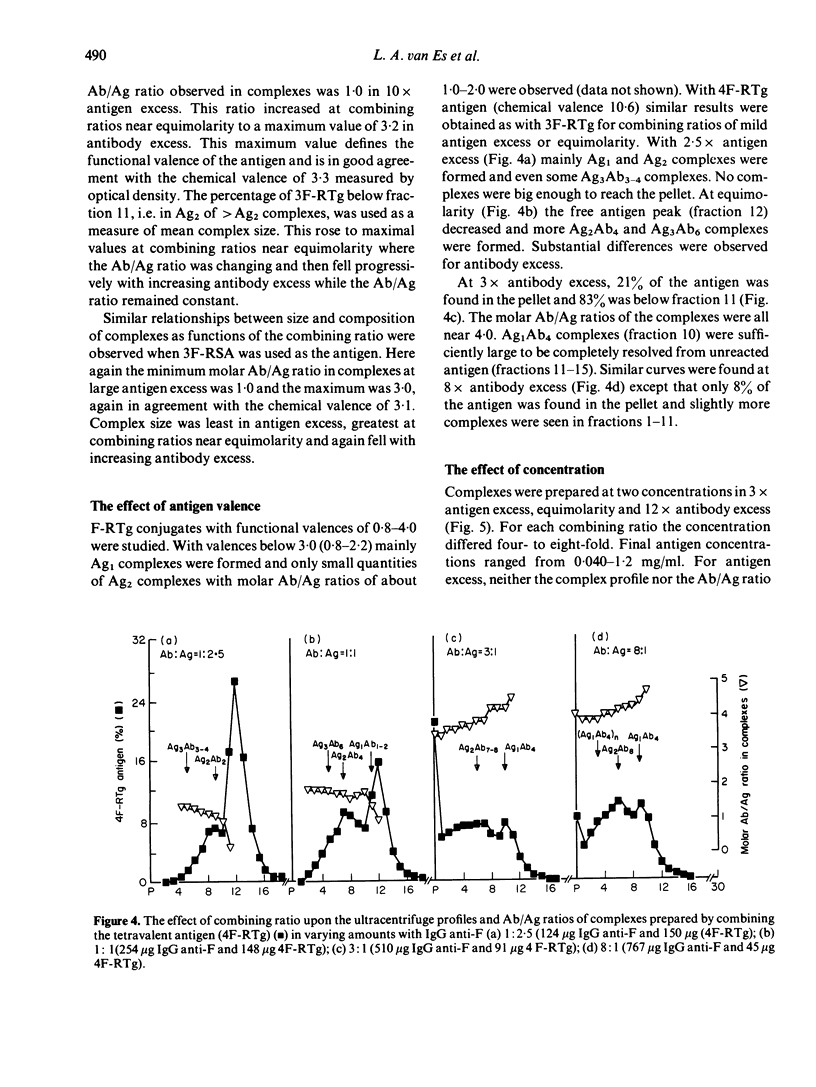
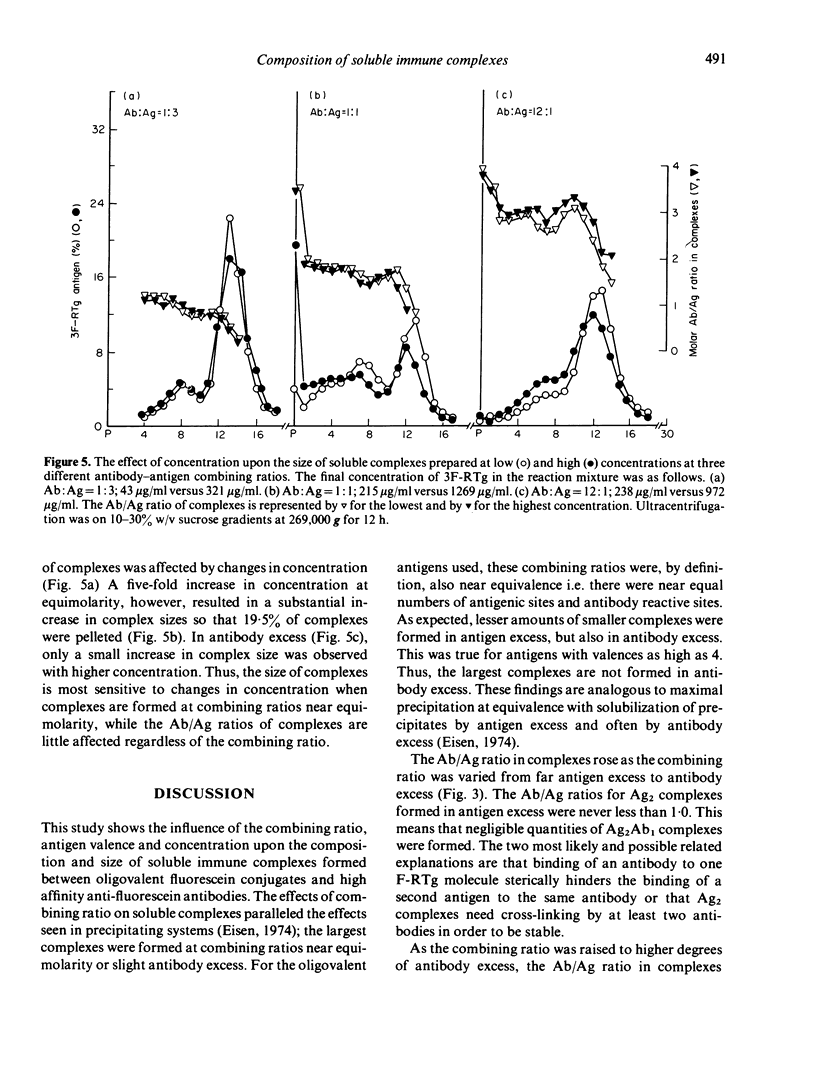


Selected References
These references are in PubMed. This may not be the complete list of references from this article.
- Arend W. P., Teller D. C., Mannik M. Molecular composition and sedimentation characteristics of soluble antigen-antibody complexes. Biochemistry. 1972 Oct 24;11(22):4063–4072. doi: 10.1021/bi00772a008. [DOI] [PubMed] [Google Scholar]
- DeLisi C. A theory of precipitation and agglutination reactions in immunological systems. J Theor Biol. 1974 Jun;45(2):555–575. doi: 10.1016/0022-5193(74)90130-1. [DOI] [PubMed] [Google Scholar]
- Hyslop N. E., Jr, Dourmashkin R. R., Green N. M., Porter R. R. The fixation of complement and the activated first component (C1) of complement by complexes formed between antibody and divalent hapten. J Exp Med. 1970 Apr 1;131(4):783–802. doi: 10.1084/jem.131.4.783. [DOI] [PMC free article] [PubMed] [Google Scholar]
- Katz D. H., Paul W. E., Goidl E. A., Benacerraf B. Carrier function in anti-hapten immune responses. I. Enhancement of primary and secondary anti-hapten antibody responses by carrier preimmunization. J Exp Med. 1970 Aug 1;132(2):261–282. doi: 10.1084/jem.132.2.261. [DOI] [PMC free article] [PubMed] [Google Scholar]
- Kijlstra A., Knutson D. W., van der Lelij A., van Es L. A. Characteristics of soluble immune complexes prepared from oligovalent DNP conjugates and anti-DNP antibodies. J Immunol Methods. 1977;17(3-4):263–277. doi: 10.1016/0022-1759(77)90109-0. [DOI] [PubMed] [Google Scholar]
- Knutson D. W., van Es L. A., Kayser B. S., Glassock R. J. Soluble oligovalent antigen--antibody complexes. II. The effect of various selective forces upon relative stability of isolated complexes. Immunology. 1979 Jun;37(2):495–503. [PMC free article] [PubMed] [Google Scholar]
- Lightfoot R. W., Jr, Drusin R. E., Christian C. L. Properties of soluble immune complexes. J Immunol. 1970 Dec;105(6):1493–1500. [PubMed] [Google Scholar]
- MARTIN R. G., AMES B. N. A method for determining the sedimentation behavior of enzymes: application to protein mixtures. J Biol Chem. 1961 May;236:1372–1379. [PubMed] [Google Scholar]
- McConahey P. J., Dixon F. J. A method of trace iodination of proteins for immunologic studies. Int Arch Allergy Appl Immunol. 1966;29(2):185–189. doi: 10.1159/000229699. [DOI] [PubMed] [Google Scholar]
- SALVATORE G., SALVATORE M., CAHNMANN H. J., ROBBINS J. SEPARATION OF THYROIDAL IODOPROTEINS AND PURIFICATION OF THYROGLOBULIN BY GEL FILTRATION AND DENSITY GRADIENT CENTRIFUGATION. J Biol Chem. 1964 Oct;239:3267–3274. [PubMed] [Google Scholar]
- Steensgaard J., Funding L. On the formulation of a reaction scheme for the interaction between an antigen and its antibody. Immunology. 1974 Feb;26(2):299–302. [PMC free article] [PubMed] [Google Scholar]
- Steward M. W., Petty R. E. The antigen-binding characteristics of antibody pools of different relative affinity. Immunology. 1972 Dec;23(6):881–887. [PMC free article] [PubMed] [Google Scholar]
- Stupp Y., Yoshida T., Paul W. E. Determination of antibody-hapten equilibrium constants by an ammonium sulfate precipitation technique. J Immunol. 1969 Sep;103(3):625–627. [PubMed] [Google Scholar]
- TALMAGE D. W. The kinetics of the reaction between antibody and bovine serum albumin using the Farr method. J Infect Dis. 1960 Jul-Aug;107:115–132. doi: 10.1093/infdis/107.1.115. [DOI] [PubMed] [Google Scholar]
- The T. H., Feltkamp T. E. Conjugation of fluorescein isothiocyanate to antibodies. I. Experiments on the conditions of conjugation. Immunology. 1970 Jun;18(6):865–873. [PMC free article] [PubMed] [Google Scholar]
- Valentine R. C., Green N. M. Electron microscopy of an antibody-hapten complex. J Mol Biol. 1967 Aug 14;27(3):615–617. doi: 10.1016/0022-2836(67)90063-0. [DOI] [PubMed] [Google Scholar]


